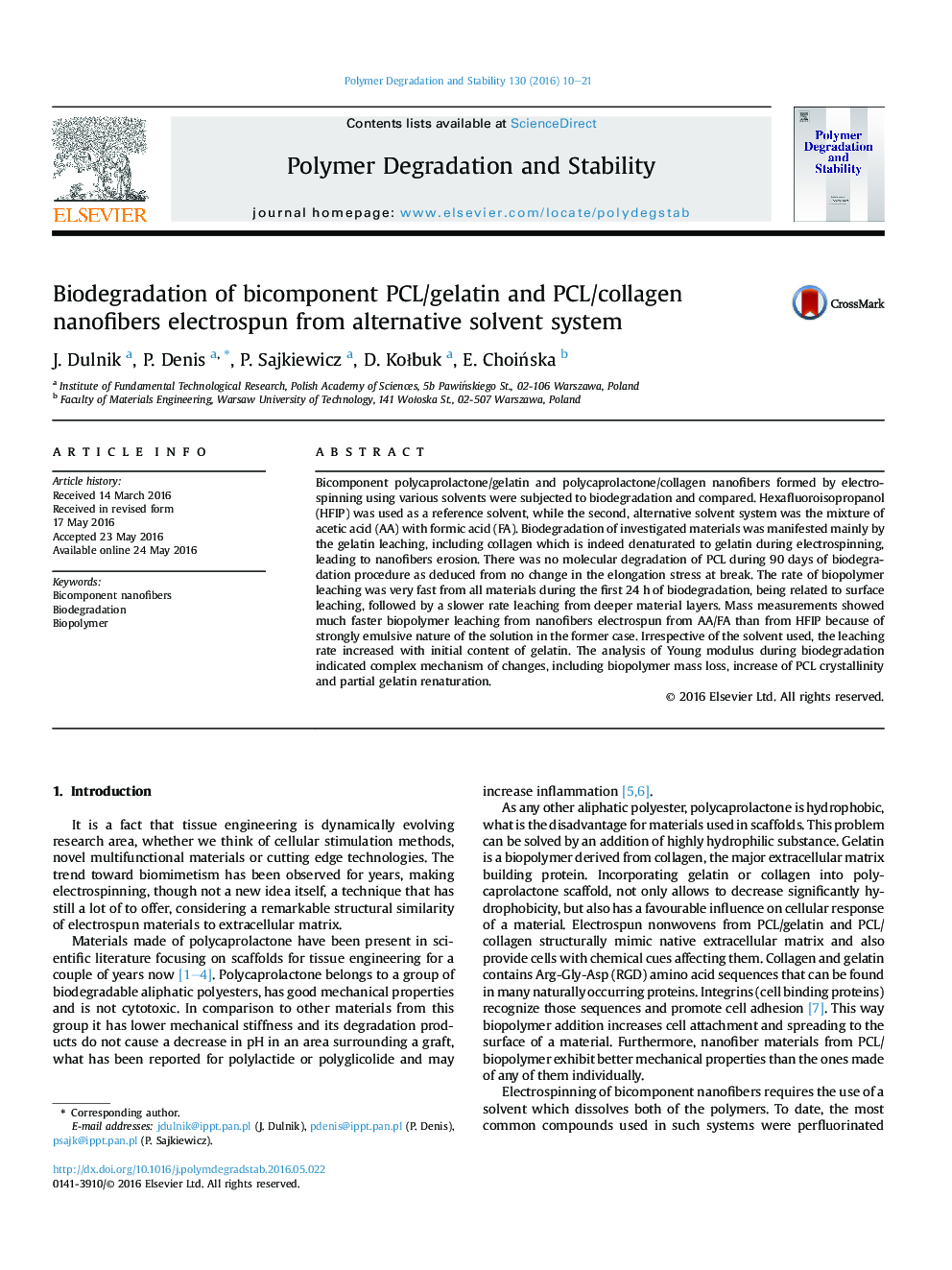| Article ID | Journal | Published Year | Pages | File Type |
|---|---|---|---|---|
| 5201058 | Polymer Degradation and Stability | 2016 | 12 Pages |
Bicomponent polycaprolactone/gelatin and polycaprolactone/collagen nanofibers formed by electrospinning using various solvents were subjected to biodegradation and compared. Hexafluoroisopropanol (HFIP) was used as a reference solvent, while the second, alternative solvent system was the mixture of acetic acid (AA) with formic acid (FA). Biodegradation of investigated materials was manifested mainly by the gelatin leaching, including collagen which is indeed denaturated to gelatin during electrospinning, leading to nanofibers erosion. There was no molecular degradation of PCL during 90 days of biodegradation procedure as deduced from no change in the elongation stress at break. The rate of biopolymer leaching was very fast from all materials during the first 24Â h of biodegradation, being related to surface leaching, followed by a slower rate leaching from deeper material layers. Mass measurements showed much faster biopolymer leaching from nanofibers electrospun from AA/FA than from HFIP because of strongly emulsive nature of the solution in the former case. Irrespective of the solvent used, the leaching rate increased with initial content of gelatin. The analysis of Young modulus during biodegradation indicated complex mechanism of changes, including biopolymer mass loss, increase of PCL crystallinity and partial gelatin renaturation.
